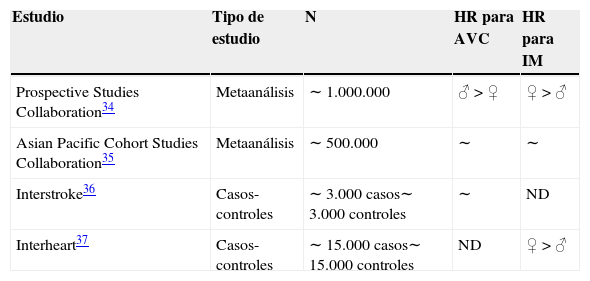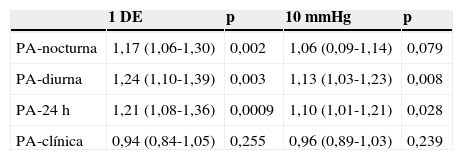La presión arterial (PA) evoluciona con la edad; hasta la década de los 50 es superior en hombres que en mujeres, igualándose entonces e incluso pasando a ser más elevada en mujeres. La prevalencia de PA controlada parece ser similar entre ambos sexos, pero la prevalencia de enfermedad cardiovascular es más elevada en mujeres que en hombres. Debe plantearse, pues, la posibilidad de que la PA influya en el riesgo cardiovascular de forma distinta según el sexo. Mientras algunos estudios no muestran diferencias, otros evidencian un mayor riesgo en mujeres que en hombres a igualdad de cifras de PA. Según estos últimos, parece que la medida de PA ambulatoria, y no la PA clínica, es la que marcaría las diferencias en esta asociación entre PA-sexo y riesgo cardiovascular. Debería, por tanto, investigarse la posibilidad de un objetivo de PA distinto en mujeres y hombres, evaluando especialmente la PA ambulatoria.
Blood pressure (BP) evolves with age; until the 50's it is higher in men than in women, equaling and even then increasing in women. The prevalence of controlled BP appears to be similar between the sexes, but the prevalence of cardiovascular disease is higher in women than in men. The possibility that BP influences the cardiovascular risk differently according to sex must therefore be considered. While some studies suggest no difference exists, others have shown evidence of an increased risk in women with respect to men despite equal BP. In this way, it seems that the measurement of ambulatory BP, but not office BP, would mark the differences in the association between BP-gender and cardiovascular risk. It should therefore be investigated the possibility of a different BP goal for women and men, especially by evaluating ambulatory BP.
Artículo
Comprando el artículo el PDF del mismo podrá ser descargado
Precio 19,34 €
Comprar ahora











